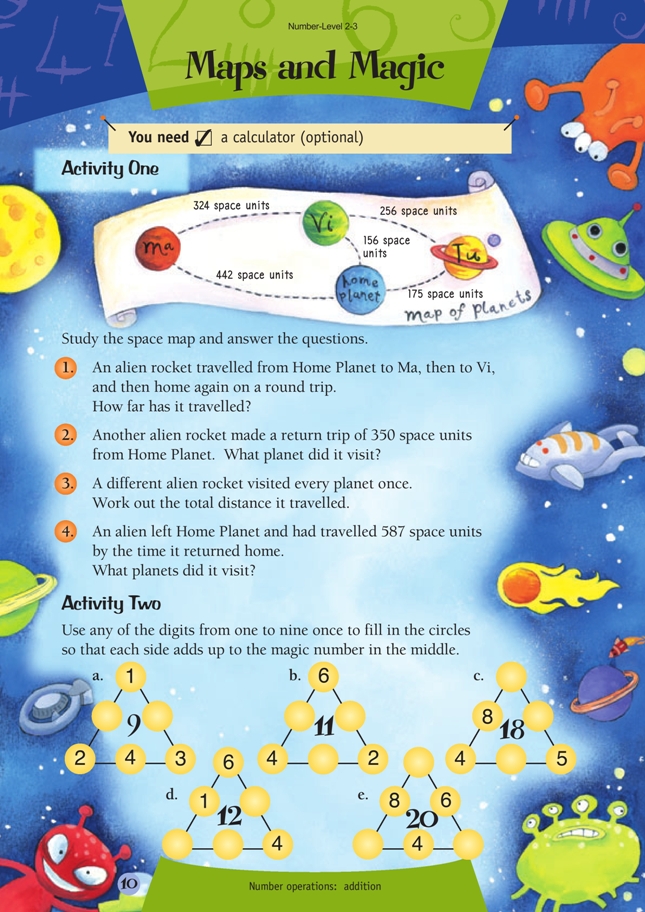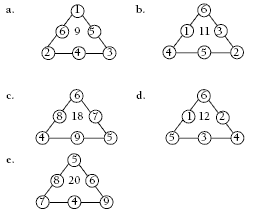This is a level 3 number activity from the Figure It Out series. It relates to Stage 6 of the Number Framework.
A PDF of the student activity is included.
Click on the image to enlarge it. Click again to close. Download PDF (407 KB)
use estimation to solve addition and subtraction
Calculator (optional)
Activity One
Students will need to recognise that the space map is not to scale. They will need to identify the numbers to be added in each problem and discard irrelevant information. Encourage them to use sensible estimation strategies rather than relying on lengthy calculations. For example, question 2 can be solved by realising that Ma is too far away, Vi is too close, and only a return trip to Tu (175 x 2 space units) can produce an answer anywhere near 350 space units.
Question 4 requires students to look for connected distances with a total of 587 space units. One effective strategy is to look at ones-digit totals. A journey to Vi and Ma and home again would result in a ones-digit total of 6 + 4 + 2 = 12, which eliminates this as the possible route taken.
Students may enjoy creating their own space map problems for others or looking at distance maps for New Zealand roads, which are available from the Automobile Association and most petrol stations.
Activity Two
A systematic strategy is useful for solving magic number problems. Listing the numbers 1–9 will help students keep track of the digits that have been used.
For example, consider problem c:
.gif)
Problem e is quite difficult. It can be solved by trial and error, but reasoning can save a lot of effort.
Looking at the numbers that could go in the corners of the side with 4 on it, we realise that they must add to 16 for the whole side to total 20. Only two numbers, 7 and 9, are left to make this possible, so the triangle becomes:
The right-hand option does not work because no digit can fit in the remaining circle to make the other two side totals equal.
The solution must be:
Students might enjoy creating similar square puzzles, such as:
Once again, they would select digits between 0–9 to fill in the circles and make each side total equal to 12.
Answers to Activities
Activity One
1. 922 space units
2. Tu
3. 1197 space units (including returning to Home Planet)
4. Tu and Vi
Activity Two





